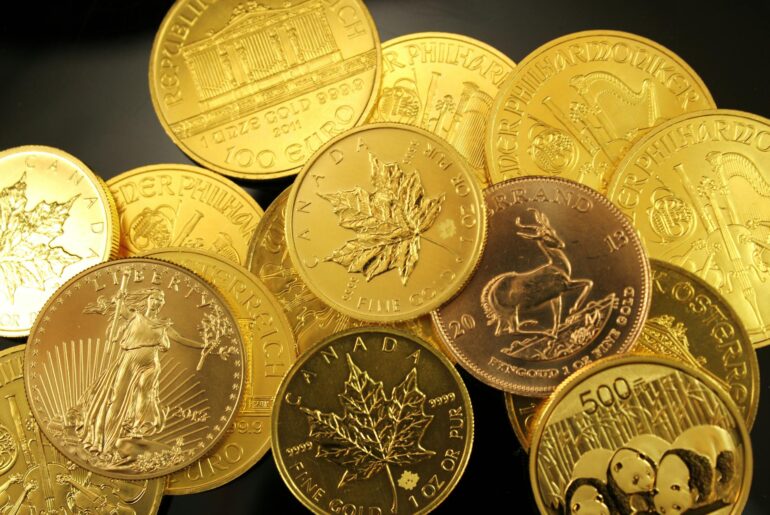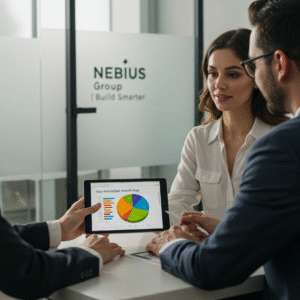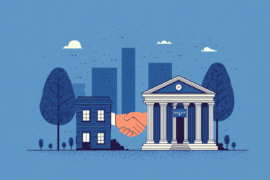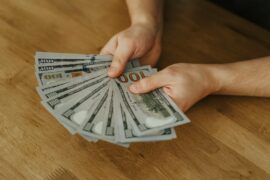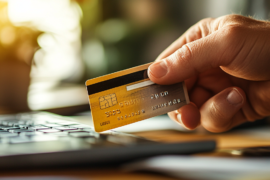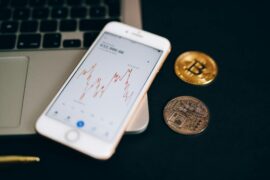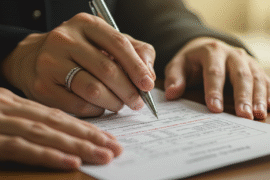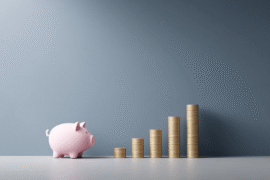This article may contain references to products or services from one or more of our advertisers or partners. We may receive compensation when you click on links to those products or services. Nonetheless, our opinions are our own.
The information presented in this article is accurate to the best of our knowledge at the time of publication. However, information is subject to change, and no guarantees are made about the continued accuracy or completeness of this content after its publication date.
If you’ve ever come across a handful of coins tucked away in an old jar or passed down through generations, you might have brushed them off as mere pocket change. However, before you spend them or throw them away, you might want to examine them more closely. Understanding the worth of these eight rare coins, whether you’re a casual collector or simply curious about the hidden treasures in your possession, could make a significant difference between a simple transaction and a substantial payout. We’ll explore these uncommon gems to help you identify coin value and avoid spending a bunch.
- Identifying Rare Coins Hidden in Your Collection
- The True Value of Your Coins
- How to Assess Your Coins Before Selling
- Preserving Your Coins to Maintain Their Value
- Where to Sell Rare Coins for Maximum Profit
- Building a Coin Collection That Appreciates Over Time
- Conclusion
- Frequently Asked Questions
- What are the eight rare coins I should be aware of?
- Why are these coins considered rare?
- How can I determine the value of my coins?
- What should I do if I find one of these coins?
- Are there signs to look for when evaluating coins?
- Can I sell these coins if I don’t want to keep them?
- What mistakes should I avoid?
- Are other rare coins likely to increase in value?
- Recommended Reads
Digging through your collection may uncover some unexpectedly valuable gems. Many people don’t realize that everyday coins can possess exceptional rarity and worth. Here are a few telltale signs that might indicate you have a rare coin on your hands:
- Mint Marks: Check for any unique mint marks, which can substantially increase a coin’s value. For instance, coins with an “S” for San Francisco or “D” for Denver may be rarer than their Philadelphia counterparts.
- Condition: The state of the coin matters greatly. Coins that are uncirculated or in mint condition often fetch higher prices. Look for signs of wear, scratches, or discoloration.
- Limited Mintage: Coins that were minted in limited quantities can be considerably more valuable. Research any known rarities in your collection.
- Historical Relevance: Coins from specific historical events, like commemorative issues or those used during imoirtant periods, often hold special value for collectors.
Common Rare Coins and Their Values
| Coin | Approx. Value | Factor |
|---|---|---|
| 1909-S V.D.B. Lincoln Penny | $1,700+ | Low Mintage |
| 1937-D 3-Legged Buffalo Nickel | $2,200+ | Mint Error |
| 1955 Double Die Wheat Penny | $1,800+ | Minting Mistake |
| 1969-S Double Die Lincoln Penny | $100,000+ | Rare Minting Error |
Even the most common-looking coins might be hiding something special. When in doubt, consult a reputable coin dealer or reference guide to help you identify potential treasures within your collection.
The True Value of Your Coins
Knowing the real worth of your coins can significantly impact your coin collection. Even seemingly insignificant coins can hold significant historical and monetary value. Remember, several factors, such as a coin’s rarity, condition, and collector demand, influence its true worth. Market fluctuations can cause undervalued coins to skyrocket in price in the future. So, if you come across any of these eight rare coins, hold onto them tightly your future self may thank you.
Value Determinants to Consider
- Rarity: Coins that were minted in limited quantities are often more valuable.
- Condition: The grading of a coin affects its value significantly. Coins in mint condition typically command higher prices.
- Market Trends: Just like stocks, the demand for certain coins can rise and fall based on collector interest.
Extremely Rare Examples
| Coin Name | Estimated Value | Minting Year |
|---|---|---|
| 1894-S Barber Dime | $1.9 million | 1894 |
| 1933 Saint-Gaudens Double Eagle | $7.6 million | 1933 |
| 1913 Liberty Head Nickel | $3 million | 1913 |
By taking a closer look at your collection and understanding the nuances of rarity and market demand, you can make informed decisions that pave the way for potential financial gains.
How to Assess Your Coins Before Selling
Before you make the decision to sell any coins, it’s important to take a closer look at their condition and rarity. Start by examining each coin for signs of wear and damage. Look for details such as the clarity of the engraving, the shine of the surface, and any scratches or discoloration.
Condition Categories
- Uncirculated: No signs of wear; looks brand new.
- Fine: Moderate wear; features are still visible but show some signs of aging.
- Good: Ample wear; details may be worn down but the coin is still identifiable.
Next, research the rarity of each coin. Some coins may seem common, but their historical significance can greatly increase their value. Use online resources, price guides, or consult an expert to estimate their worth.
| Coin Type | Condition | Estimated Value |
|---|---|---|
| 1922 Silver Dollar | Uncirculated | $4,000+ |
| 1893-S Morgan | Fine | $1,200+ |
| 1955 Double Die Penny | Good | $1,500+ |
A well-informed seller is more likely to secure top dollar for their collectibles.
Voted "Best Overall Budgeting App" by Forbes and WSJ
Monarch Money helps you budget, track spending, set goals, and plan your financial future—all in one app.
Get 50% OFF your first year with code MONARCHVIP
Preserving Your Coins to Maintain Their Value
Proper care and storage are needed to maintaining the value of rare coins. Even small actions can keep your coins in pristine condition, ensuring their value increases over time.
Preservation Tips
- Clean with Caution: Avoid using water or harsh chemicals. Use a soft, dry cloth to gently dust your coins. If necessary, consult a professional before cleaning.
- Store Safely: Use coin holders or capsules made of inert materials to prevent tarnishing. Airtight containers limit exposure to moisture and air.
- Control the Environment: Keep your collection in a climate-controlled space. Temperature and humidity fluctuations can cause irreversible damage.
- Avoid Handling: Oils from your fingers can leave smudges and corrosion. Use gloves when handling your coins.
Investing in a secure display case or safe can enhance both the protection and presentation of your coins.
Where to Sell Rare Coins for Maximum Profit
If you find yourself in possession of rare coins, knowing the best platforms to sell them can drastically impact your profits.
Sales Channels
- Coin Dealers: Established dealers can offer immediate purchase options. Shop around for the best offers and request multiple appraisals.
- Online Auctions: Platforms like eBay offer access to global markets. Competitive bidding may increase your selling price.
- Coin Shows: Attending collector events enables direct negotiation and networking.
- Social Media Groups: Niche communities on platforms like Facebook let you bypass traditional fees and connect with collectors directly.
| Coin Type | Average Price |
|---|---|
| 1909-S V.D.B. Lincoln Penny | $1,000–$2,500 |
| 1921 Peace Dollar | $800–$1,200 |
| 1933 Saint-Gaudens Double Eagle | $7,590,000 (auction) |
| 1877 Indian Head Penny | $1,000–$1,500 |
Always evaluate coin condition, rarity, and demand before listing, and consider professional appraisals when in doubt.
Building a Coin Collection That Appreciates Over Time
When it comes to investing in rare coins, understanding the factors that drive their value is important. Focus on coins with limited mintages, strong demand, or historical significance. For instance, the famous 1909-S V.D.B. Lincoln penny can fetch thousands if well-preserved.
Organizing Your Collection
Choose a focus early American coins, world coins, or error coins and keep your inventory updated with estimated values.
| Coin Type | Year | Estimated Value |
|---|---|---|
| Lincoln Penny | 1909-S | $2,000+ |
| St. Gaudens Gold Eagle | 1920 | $2,500+ |
| Mercury Dime | 1916 | $1,500+ |
Regularly attending shows and networking with fellow collectors will keep you informed and connected to valuable market insights.
Conclusion
Rare coins may be closer to your fingertips than you realize. Whether you’re sifting through old jars or organizing a family collection, recognizing the potential value of these hidden gems could lead to meaningful financial rewards. With the right knowledge, proper storage, and careful selling strategies, you can unlock new opportunities for profit, and even build a collection that appreciates over time. Treat each coin with respect, stay informed, and you might just discover that what once looked like spare change is actually a small fortune waiting to be claimed.
Frequently Asked Questions
What are the eight rare coins I should be aware of?
The eight rare coins include the 1909-S V.D.B. penny, 1913 Liberty Head nickel, 1933 Saint-Gaudens gold double eagle, 1955 Double Die penny, 1964 Kennedy half dollar, 1970-S Proof penny, 1999 Jefferson nickel (reverse proof), and the 2000 Sacagawea dollar (Cheerios edition).
Why are these coins considered rare?
They are rare due to limited mintage, historical significance, or unique minting errors.
How can I determine the value of my coins?
Use coin price guides, professional appraisals, or auction result databases. Coin shows and online marketplaces are also helpful for valuation.
What should I do if I find one of these coins?
Handle with care, avoid cleaning, store in a protective holder, and consult an expert for evaluation.
Are there signs to look for when evaluating coins?
Yes. Check for mint marks, low-mintage years, unique design features, and known error types.
Can I sell these coins if I don’t want to keep them?
Absolutely. Sell via auctions, dealers, or coin shows just ensure you research market values first.
What mistakes should I avoid?
Don’t clean or alter coins, don’t sell without research, and beware of scams. Work only with reputable buyers.
Are other rare coins likely to increase in value?
Yes. Coins with historical ties, mint errors, or limited mintage often appreciate. Watch for upcoming releases as well.

Reviewed and edited by Albert Fang.
See a typo or want to suggest an edit/revision to the content? Use the contact us form to provide feedback.
At FangWallet, we value editorial integrity and open collaboration in curating quality content for readers to enjoy. Much appreciated for the assist.
Did you like our article and find it insightful? We encourage sharing the article link with family and friends to benefit as well - better yet, sharing on social media. Thank you for the support! 🍉
Article Title: 8 Rare Coins That Could Be Worth Thousands
https://fangwallet.com/2025/06/01/8-rare-coins-that-could-be-worth-thousands/The FangWallet Promise
FangWallet is an editorially independent resource - founded on breaking down challenging financial concepts for anyone to understand since 2014. While we adhere to editorial integrity, note that this post may contain references to products from our partners.
The FangWallet promise is always to have your best interest in mind and be transparent and honest about the financial picture.
Become an Insider

Subscribe to get a free daily budget planner printable to help get your money on track!
Make passive money the right way. No spam.
Editorial Disclaimer: The editorial content on this page is not provided by any of the companies mentioned. The opinions expressed here are the author's alone.
The content of this website is for informational purposes only and does not represent investment advice, or an offer or solicitation to buy or sell any security, investment, or product. Investors are encouraged to do their own due diligence, and, if necessary, consult professional advising before making any investment decisions. Investing involves a high degree of risk, and financial losses may occur including the potential loss of principal.
Source Citation References:
+ Inspo
There are no additional citations or references to note for this article at this time.
